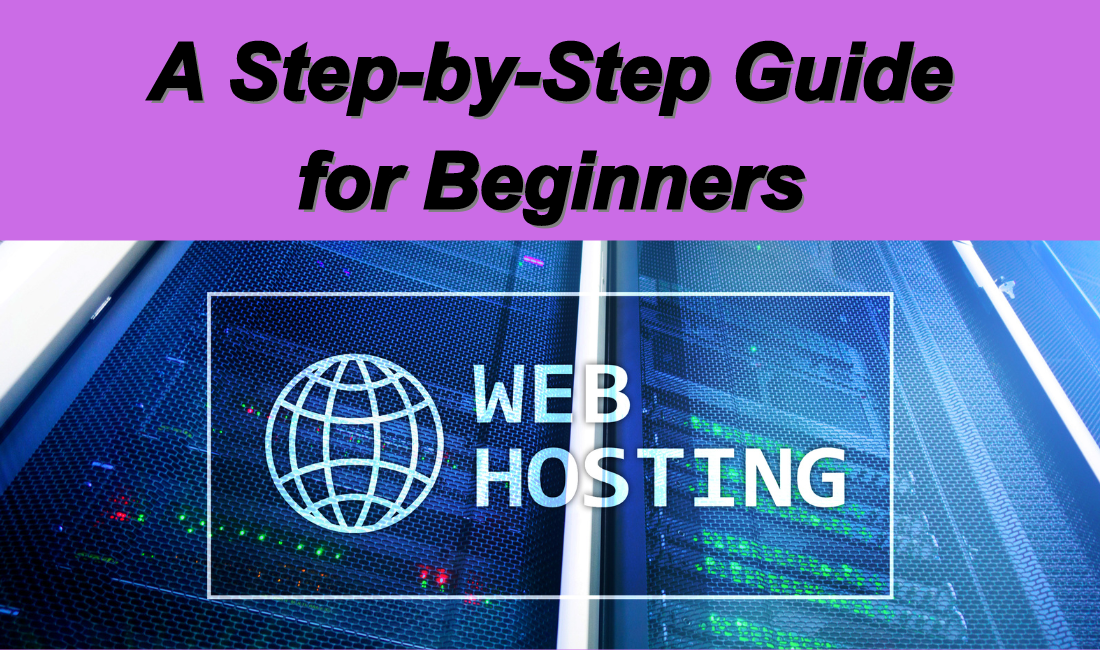If you’re looking to start your own website, but don’t know where to start or feel overwhelmed by the process, read on for our step-by-step guide on how to host a website.
We cover everything from choosing a hosting provider to setting up your website, so you can start building your online presence today!
Starting a website can seem like an intimidating task, but it doesn’t have to be. In this guide, we will walk you through the steps of setting up a website from start to finish.
covering everything from choosing a hosting provider to creating your website’s content. So whether you’re a beginner looking to get started online or an experienced user with a new project in mind, this guide is for you!
Creating a website is a great way to share your message with the world, but it can be daunting for beginners. In this article, we will walk you through setting up a website, from finding a hosting provider to creating your website’s content. By the end of this guide, you will have everything you need to get started!
Choosing the Right Domain
If you’re thinking of starting your website, the first thing you need to do is choose a domain name. There are several options available, and some considerations you should make include.
the name’s marketability, the name length, and its availability. Once you’ve chosen a domain name, you’ll need to register it with the appropriate registrar.
Once that’s done, you’ll need to create a website hosting account and configure it according to your domain’s settings. Next, you’ll need to create or find a domain registration template and fill in the relevant information. Finally, add your website content and start promoting your site!
Choosing a Hosting Provider
If you’re thinking of starting your own website, hosting is a crucial part of the process. There are a lot of different hosting providers out there, and it can be hard to decide which one to choose.
In this guide, we’ll walk you through the steps necessary to choose a hosting provider and get your website up and running.
First, you’ll need to decide what kind of website you want to build. Do you want a blog? A business website? A personal website? Once you’ve decided on the type of website, you’ll need to find a hosting provider that matches your needs.
Here are some tips to help you find the right host:
1. Do your research
The first step in choosing a hosting provider is doing your research. Reading reviews will help you find the best option for your needs. It’s important to note that not all reviews are accurate or unbiased; however, taking the time to read multiple reviews should help you narrow down your options.
2. Look for a provider with a good price
Price is one of the most important factors to consider when choosing a hosting provider. Make sure you find a provider with a good price that meets your needs.
3. Look for features that fit your needs
Another important factor to consider is features. Make sure the host you choose has features that will meet your needs. Some features you may want to look for include: unlimited storage, email, and domain registration, SSL support, and a cPanel interface.
Setting Up Your Website
If you’re thinking of starting your own website, there are a few things you’ll need before you can get started. This guide will teach you how to set up your website using the most popular web hosting providers.
First, you’ll need to choose a web hosting provider. There are many different options available, so it’s important to choose the one that’s right for you. You can find a list of the most popular web hosting providers below.
Once you’ve chosen a web hosting provider, you’ll need to create an account and sign up for a plan. Once you have an account, you’ll need to create your website. To do this, you’ll need to select a domain name and sign up for a hosting plan with the correct domain name.
After your website is set up, you’ll need to configure it using the provided instructions. This will include configuring your website’s settings, adding content, and setting up your website’s security measures.

Designing Your Website
If you have always wanted to have your own website, but were intimidated by the process, fear not! In this guide, we will walk you through the basics of designing a website from start to finish.
First and foremost, you will need a web hosting service. There are a number of options available online, so it is important to find one that meets your needs.
Once you have chosen a web host, you will need to create a website account. This account will allow you to access your website and make changes to it.
Once you have created your website account, you must choose a domain name. A domain name is a URL (Uniform Resource Locator) that identifies your website.
You can purchase a domain name or find an unused domain name that is already registered. Once you have selected a domain name, you will need to sign up for a hosting account with the domain name provider.
Now that you have created your website and signed up for a hosting account, it is time to start designing your website!
In this guide, we will cover the following topics:
-Choosing a Web Hosting Service
-Choosing a Domain Name
-Designing Your Website
Hosting and Securing Your Website
If you are thinking of starting your own website, then hosting and securing it is an important step. This guide will help you get started.
When you start a website, the first thing you need is a domain name and hosting. A domain name is the name of your website, and you can buy one from a domain name registrar.
The next step is to choose a hosting provider. There are many different hosting providers available, and each has its own features and prices. The most important factor when choosing a hosting provider is security. Make sure to choose a provider that has a good reputation for being secure.
To start your website, you will need to create a service account with your chosen hosting provider. This account will allow you to access your website files and settings.
Now that you have your website up and running, it’s time to protect it! You need to protect your site from unauthorized access, spyware attacks, and online fraud. To do this, you will need to use security measures such as passwords, firewalls, and encryption software.
Generating Traffic to Your Website
A website is a great way to promote your business and reach new customers. However, hosting a website can be a daunting task for beginners. This guide will help you generate traffic to your website easily.
First, you will need to find a domain name. You can buy a domain name or rent one through a domain name provider. Once you have your domain name, you will need to create a web hosting account.
A web host will provide you with the hosting space for your website and the necessary software to create and manage your website.
Next, you will need to create a website copy. This copy is the page of your website that visitors will see when they arrive on your website. You can use HTML (the language of websites) or WordPress (a popular content management system).
Once you have created your website copy, you will need to add content to it. This content can be about your business or products. You can also add images, videos, and other elements to make your website look professional.
7. Making Money from Your Website
If you’re thinking of starting your own website, then you’ve come to the right place. In this blog post, we’re going to show you how to create a website from scratch.
First, you’ll need a domain name and hosting account. You can find these details on our website or by using a search engine. Once you have your domain name and hosting account, you can start setting up your website.
To start, you’ll need a web host and a domain name. We recommend Bluehost because they offer an easy-to-use platform and great customer service. Once you have your web host and domain name, you can start setting up your website.
To get started, first create a folder on your computer where you will store all of the files for your website. Next, download the WordPress software onto your computer.
WordPress is a popular content management system (CMS), so it is likely that your web host offers it as part of their package. After downloading WordPress, install it by following the instructions on the WordPress website.


